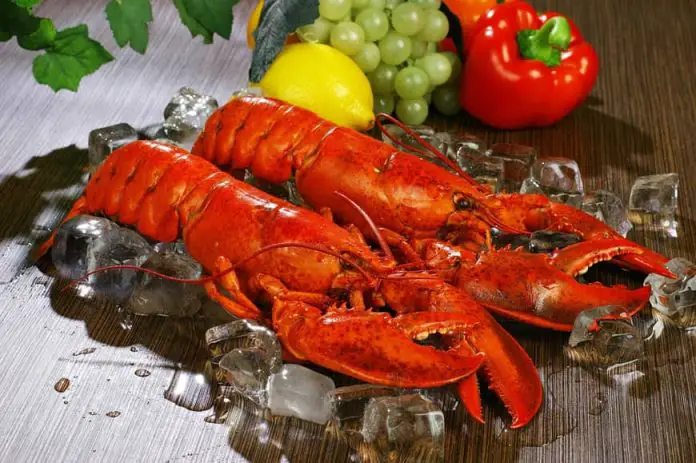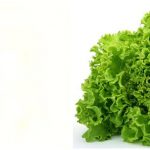The majority of the world’s population has an unrequited love for their friendly canine companions. It comes to no surprise that a lot of dog owners, like you and I, want to make them feel special in a way that would make them happy, and one way we do this is by sharing our favorite human food with them!
Commercially sold dog food can get pretty stale for a dog (not that they know how to complain though), they either come in the form of soggy meat meals or dry kibble. People like you and I only want what’s best for them, and we sometimes pity them for their redundant meals, which make us eventually try to think of different food ideas to serve them for occasional splurges and treats. If that is the case, then what’s a more decadent and self-indulgent meal than a lobster?
Can Dogs Have Lobster?
You might have been in a certain situation when you had a succulent lobster as your meal, and you just so happened to ask yourself at the time: “Is it safe to feed my dog lobster?” To put it quite frankly, the definitive answer is yes. Lobster is in no way toxic to them, which means that they can freely have a bite or two without facing any dire consequences to their health and overall well-being.
It’s important to note that even though lobster is not toxic or inherently dangerous to a dog’s health, this does not mean that it is recommended for you to feed it to them in the first place. Lobster is a human food, and like all human food should be carefully studied and monitored before actually being considered as a food choice for your dog.
I feel that it would be best to not stray too far away from your generic commercial dog food, as it is the safest and adept in providing the necessary nutrients and minerals that your puppy needs to grow.
Before we talk about the health concerns regarding our dogs and them eating lobsters, we should first take a look at what exactly a lobster is, for educational purposes, of course. I’m pretty sure there is no argument that lobsters can be considered as one of the world’s most delicious and decadent foods. Lobsters are crustaceans that belong to the Nephropidae family and are considered seafood.
Even though these crustaceans won’t negatively affect your dog’s health immediately once eaten, that doesn’t necessarily mean that they should be given to them. However, lobsters do provide some form of nutritional value once consumed. This isn’t exactly recommended or practical as a daily occurrence because consuming lobsters detrimental to your dog’s health when eaten on a regular basis.
The Risks of Feeding Lobster to Dogs
There’s a reason why lobster isn’t exactly a part of one’s everyday diet, it can also prove to be very detrimental to us humans and dogs when eaten at a regular interval. But what exactly is it that makes lobster not a recommended food for them in general? Other than being a human food, there are other things lobster meals contain that aren’t healthy for dogs. I’ve listed the following health risks and dangers below.
High in Cholesterol – There is good and a bad type of cholesterol, but an excess in cholesterol, in general, is bad for one’s health, even more so for a dog’s. A dangerous increase in the cholesterol level can cause pancreatitis in dogs, which can often lead to pain and suffering, and in the more extreme cases, death. This is mostly due to fatty foods, such as lobsters in our case. It is always best to take into account the fat content in the foods that your puppy consumes in order to keep him healthy!
High Sodium Content – There’s no doubt that lobsters contain a substantial amount of sodium. For every 100g of lobster meat, there is almost 5g of sodium in it! Though sodium is an essential mineral that is of huge importance for our dog’s bodies to maintain the proper hydration levels, it can have detrimental effects when consumed in excess.
This often leads to a dangerous increase in blood pressure and osteoporosis, which is the loss of precious bone mass. Furthermore, your dog is at risk of developing many forms of heart and kidney diseases due to high blood pressure caused by the high amount of sodium found in lobsters.
Lobster Allergies – The most common type of allergy is a food allergy. This is all the more reason to carefully check your dog for any possible allergic reactions when you feed him a new food. A shellfish allergy wouldn’t be a surprise because most people, even dogs can suffer from it.
I personally recommend that you don’t feed any lobster to your little friend, but if the situation calls for it or if you absolutely must do so, then giving your dog a small amount first would be the best thing to do. This is so that you will have enough time to analyze and take note of your dog’s reaction and judge if he is allergic to lobsters or not. Some signs to look out or are skin rashes, diarrhea, vomiting, or any negative reactions in general.
Stomach Problems – It doesn’t mean that if your dog can stomach a tiny amount of lobster he can also do the same with a copious amount. Always practice moderation and a proper diet for your puppy. A lobster meal might not exactly agree with your dog’s stomach and could most likely cause complications and upset bowels. Lobster is a people’s food for a reason.
Things to Keep in Mind
If even after all the warnings and repercussions that I stated earlier you still wish to feed lobster to your dog, then I highly recommend that you keep a few things in mind in order not to bring unnecessary complications and health problems to your dog. I’ve listed a few key things that you could, and most likely should take note of. These tips can also apply to most, if not all, seafood.
Thoroughly cook the lobster. I’m pretty sure that this is an obvious thing to keep in mind because there isn’t much of a way to eat a lobster without it being cooked in any way. The main reason as to why this is mentioned because there is certain seafood that is mostly eaten raw, but this can be a dwelling place for parasites and bacteria that’ll make your dog sick! If you’re like most people (or at least like me), you get your lobster meal from a restaurant, in which the case you have no problems in terms of preparation.
Be wary of the use of spices. Most lobsters are usually prepared in a way that involves various spices, sauces, and condiments thrown into the mixture; these can actually be harmful to your dog! So if ever you plan on feeding him some lobster, it would be recommended to feed him a plainly steamed or boiled lobster with no added spices. Basically as plain as it gets is the best way.
Remove the lobster shell. The shells of most crustaceans, but especially the lobster ones, are pretty hard! Just make sure to always remove these before serving the meat to your dog. They’re prone to gnaw and chew on anything, and if they happen to come across a hard shell, you can definitely bet they’re going to try and eat it.
The sharp shards could cause intestinal harm if ingested as it would scrape the inner linings of the intestines and eventually cause internal bleeding. Just be wary enough not to accidentally toss some lobster meat at your dog with the shell still attached to it and he’ll be fine.
Always practice moderation. Be it seafood, lobsters, or any other new food for that matter, if it’s a human food, then it shouldn’t necessarily be fed to your dog in the first place. A seldom treat of lobster meat here and there won’t hurt in any case, as long as the portions are small and your dog enjoys it.
Conclusion
Treating our dog in a special way is most likely a second nature to us dog-lovers. Occasional splurges and treats here and there are definitely appreciated by our faithful canine companions. Though there might be a lot more nutritional and practical dog treats out there, lobster is a fine choice for a snack for your puppy. Just don’t forget to make sure that you follow all the tips listed above and pay the utmost importance to their health!























